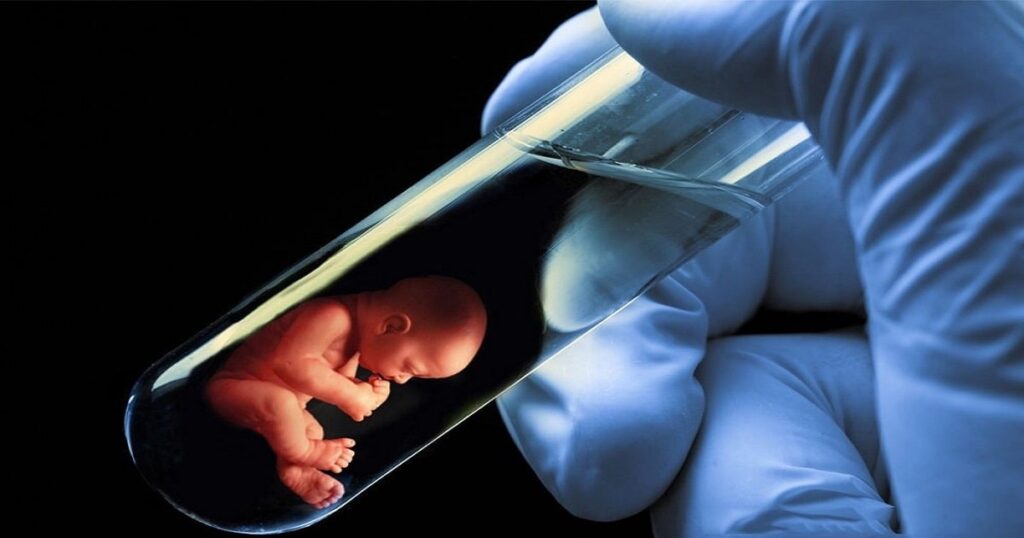What is IVF?
In vitro fertilization ( IVF) is a pregnancy that occurs and begins with an egg being fertilized by sperm outside the body. The fertilization is also done in a tube.
This procedure is performed if pregnancy does not occur despite trying various methods, such as taking medication and undergoing surgery or artificial insemination.
IVF is one of the most effective methods from the category of reproductive technologies to achieve pregnancy.
The procedure can be done using one’s own eggs assisted by the partner’s sperm. On the other hand, this method can involve eggs, sperm or embryos from a donor.
In some cases, the surrogate mother may also implant the embryo in her uterus if she feels the woman has a problem.
Reasons for IVF
In vitro fertilization (IVF) or test tube babies is a treatment performed for someone with infertility or genetic problems.
This method is chosen by someone who is experiencing infertility and has tried various methods and continues to fail.
This method is also often performed on women over 40 years of age who experience infertility and several health problems, such as:
- Blockage or damage to the fallopian tubes.
- Ovulation disorders.
- Endometriosis.
- Have had previous tube sterilization or removal.
- Having uterine fibroids.
- Impaired sperm function.
In women who do not have a healthy uterus or who have serious health risks during pregnancy, IVF may be the most appropriate solution.
In this case, the woman’s egg is fertilized with sperm, but the embryo is placed in a surrogate mother.
IVF Risk Factors
This method of getting pregnant is not always successful and can affect a person physically and emotionally.
Here are some risk factors that you need to know before undergoing the IVF method:
- Multiple births.
- Premature delivery and low birth weight.
- Ovarian hyperstimulation syndrome.
- Miscarriage.
- Complications during the egg retrieval procedure.
- Ectopic pregnancy.
- Birth defects.
Preparation for IVF
It is important to note that there are many factors that can affect the success rate of pregnancy from IVF.
Examples include age, personal health, and the clinical approach and skills during the process.
Make sure to look for the best clinic and ask for a breakdown of costs at every step.
Before starting an IVF cycle, there are several examinations that need to be carried out, including:
- Ovarian reserve testing.
- Semen analysis.
- Infectious disease screening.
- Embryo transfer practice.
- Uterine examination.
If you and your partner really want to get pregnant and always hit a dead end during the process, IVF can be the right solution.
Of course, this requires careful consideration of everything, especially health and finances.
How IVF Is Done
The IVF procedure consists of five steps:
Step 1: Stimulation, also called super ovulation
In this initial step, the woman will be given fertility drugs to increase egg production. In addition, the woman will also undergo regular transvaginal ultrasounds to check the ovaries and blood tests to check hormone levels.
Step 2: Egg Retrieval
Then a minor surgery, called follicular aspiration, will be performed to remove the eggs from the woman’s body.
Using ultrasound images as a guide, the doctor will insert a thin needle through the vagina into the ovary and the follicle sac containing the egg.
The needle is connected to a suction device that draws eggs and fluid out of each follicle one by one. The procedure is repeated for the other ovary.
Step 3: Insemination and Fertilization
The male sperm will be placed together with the best-quality egg. This procedure of mixing sperm and egg is called insemination.
The eggs and sperm are then stored in a controlled environment. The sperm will usually fertilize the egg within a few hours after insemination.
Step 4: Embryo Culture
When a fertilized egg divides, it becomes an embryo. Laboratory staff will regularly check the embryo to make sure it is growing well.
In about 5 days, a normal embryo has several actively dividing cells.
Step 5: Embryo Transfer
Embryos are placed into the woman’s uterus 3 to 5 days after egg retrieval and fertilization.
The doctor inserts a thin tube (catheter) containing the embryo into the woman’s vagina, through the cervix, and up into the uterus. If the embryo attaches (implants) to the lining of the uterus and grows, a pregnancy results.

